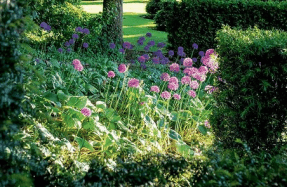

‘Sustainability’ is one buzzword that has come to the fore in gardening over the past few years. It’s a catch-all term referring to the demands our gardens place on the earth’s resources, as well as the part they play in fostering biodiversity and encouraging our own good health.
“Gardens have traditionally relied on a constant stream of resources to maintain them in a steady state, but these all come with environmental footprints,” explains designer Darryl Moore, whose book (Pimpernel) considers the effects of climate change on botanical life. Statistics about emissions and environmental degradation can be disheartening but the imperative to do our little bit of good where we are is upon us. And while as individuals we might be small, we are also many. Of the UK’s 67.33 million citizens, an estimated 27 million are hobby gardeners. A study by






